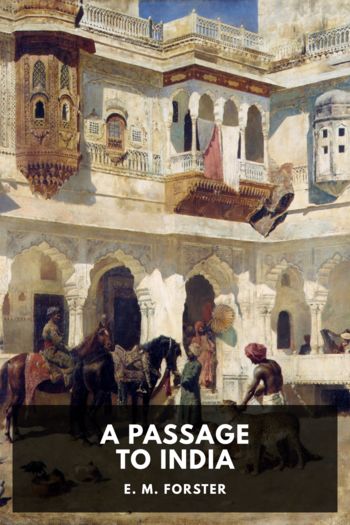More Guns Less Crime by John Jr (best free e book reader .txt) 📕

Read free book «More Guns Less Crime by John Jr (best free e book reader .txt) 📕» - read online or download for free at americanlibrarybooks.com
- Author: John Jr
Read book online «More Guns Less Crime by John Jr (best free e book reader .txt) 📕». Author - John Jr
If anything, the support among rank-and-file police officers for the right of individuals to carry guns for self-protection is even higher than it is among the general population. A recent national poll by the Lawrence Research group (September 21-28, 1996) found that by a margin of 69 to 28 percent, registered voters favor "a law allowing law-abiding citizens to be issued a permit to carry a firearm for personal protection outside their home." 73 Other recent national polling by the National Opinion Research Center (March 1997) appears even more supportive of at least allowing some law-abiding citizens to carry concealed handguns. They found that 53.5 percent supported "concealed carry only for those with special needs," while 45 percent agreed that permits should be issued to "any adult who has passed a criminal background check and a gun safety course." 74 Perhaps just as telling, only 16 percent favored a ban on handguns. 75
The National Opinion Research Center poll also provides some insights into who supports tighter restrictions on gun ownership; it claims that "the less educated and those who haven't been threatened with a gun are most supportive of gun control." 76 If this is true, it appears that those most supportive of restrictions also tend to be those least directly threatened by crime. 77
State legislators also acknowledge the inability of the police to be always available, even in the most public places, by voting to allow them-
selves unusually broad rights to carry concealed handguns. During the 1996 legislative session, for example, Georgia "state legislators quietly gave themselves and a few top officials the right to carry concealed guns to places most residents can't: schools, churches, political rallies, and even the Capitol." 78 Even local prosecutors in California strenuously objected to restrictions on their rights to carry concealed handguns. 79
Although people with concealed handgun permits must generally view the police as offering insufficient protection, it is difficult to discern any pattern of political orientation among celebrities who have concealed-handgun permits: Bill Cosby, Cybill Shepherd, U.S. Senator Dianne Feinstein (D—California), Howard Stern, Donald Trump, William F. Buckley, Arthur O. Sulzberger (chairman of the New York Times), union bosses, Laurence Rockefeller, Tom Selleck, Robert De Niro, and Erika Schwarz (the first runner-up in the 1997 Miss America Pageant). The reasons these people gave on their applications for permits were quite similar. Laurence Rockefeller's reason was that he carries "large sums of money"; Arthur Sulzberger wrote that he carries "large sums of money, securities, etc."; and William Buckley listed "protection of personal property when traveling in and about the city" as his reason. 80 Some made their decision to carry a gun after being victims of crime. Erika Schwarz said that after a carjacking she had been afraid to drive at night. 81
And when the Denver Post asked Sen. Ben Nighthorse Campbell (R— Colo.) "how it looks for a senator to be packing heat," he responded, "You'd be surprised how many senators have guns." Campbell said that "he needed the gun back in the days when he exhibited his Native American jewelry and traveled long distances between craft shows." 82
Emotion, Rationality, and Deterrence
In 1995 two children, ten and eleven years old, dropped a five-year-old boy from the fourteenth floor of a vacant Chicago Housing Authority apartment. 83 The reason? The five-year-old refused to steal candy for them. Or consider the case of Vincent Drost, a promising musician in the process of composing a symphony, who was stabbed to death immediately after making a call from a pay telephone to his girlfriend. The reason? According to the newspapers, "His five teenage attackers told police they wanted to have some fun and simply wanted 'to do' somebody." 84 It is not difficult to find crimes such as "the fatal beating of a school teacher" described as "extremely wicked, shockingly evil." The defense attorney in this crime described the act as one of "insane jealousy." 85
The notion of "irrational" crime is enshrined by forty-seven states that recognize insanity defenses. 86 Criminal law recognizes that emotions can
overwhelm our normal judgments in other ways. 87 For example, under the Model Penal Code, intentional homicide results in the penalty for manslaughter when it "is committed under the influence of extreme mental or emotional disturbance for which there is reasonable explanation or excuse." 88 These mitigating factors are often discussed in terms of the "heat of passion" or "cooling time," the latter phrase referring to "the interval in which 'blood 5 can be expected 'to cool 5 " or the time required for "reason to reassert itself." 89 Another related distinction is drawn between first- and second-degree murder: "The deliberate killer is guilty of first-degree murder; the impulsive killer is not." 90 In practice, the true distinction between these two grades appears to be not premeditation but whether the act was done without emotion or "in cold blood," "as is the case [when] someone who kills for money ... displays calculation and greed." 91
Some academics go beyond these cases or laws to make more general claims about the motives behind crime. Thomas Carroll, an associate professor of sociology at the University of Missouri at Kansas City, states that "murder is an irrational act, [and] we don't have explanations for irrational behavior." 92 From this he draws the conclusion that "there's really no statistical explanation" for what causes murder rates to fluctuate. Do





Comments (0)